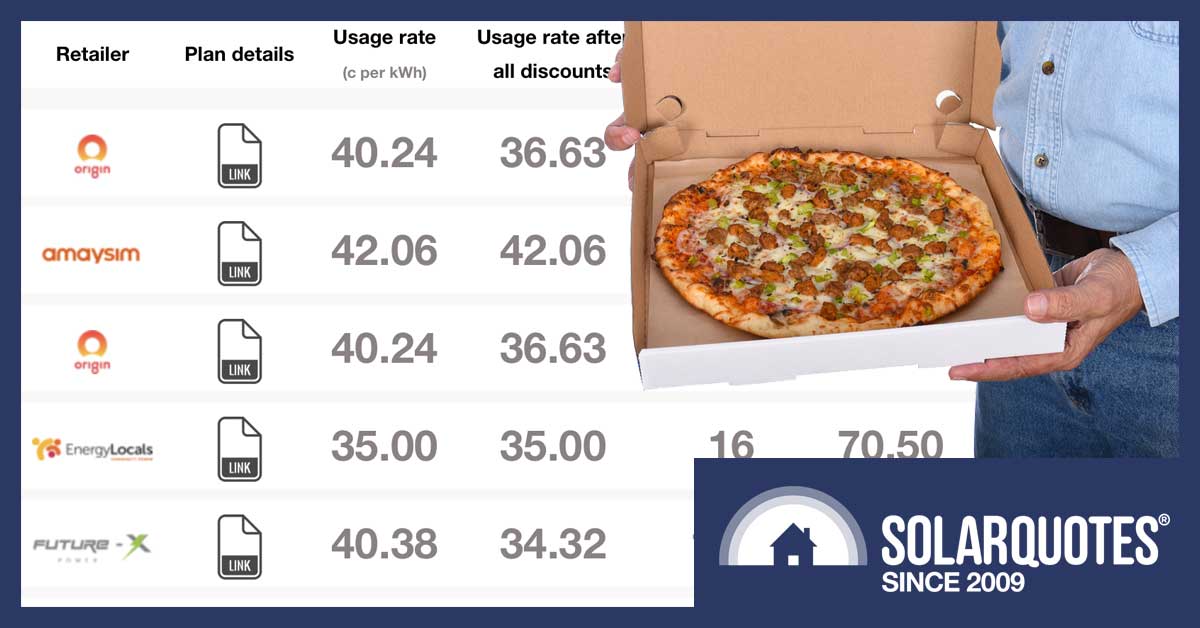
Introducing Solarquotes New Retail Electricity Plan Comparison Tool: It Will Pay For Pizza!
I’m paying way too much for electricity. It’s driving me broke! Financially I was doing okay until I told everyone I’d buy them pizza and it end up costing me $90. How can pizza cost $90? It’s dough, tomato sauce, ham, pineapple, and maybe some corn if you’re Japanese. How can that be $90? We only had four of them!
After that debacle, if I’m going to stay out of debtor’s prison, I need to make some drastic cuts in my spending. It’s time to tighten the belt, cut the fat, pinch pennies until they squeal, and stop up the passage to remorse. A good place to start is my electricity bill. Lucky for me, SolarQuotes now has a brand spanking new retail electricity plan comparison tool.

When Lady Macbeth decides to put corn on her pizza, she does not mess around.
I was going to wait until the comparison tool was out of beta testing and fully perfected before trying it out. Once it’s complete the electricity retailers of Australia shall tremble before its might as they witness the power of this fully operational comparison tool. But if I wait any longer I’ll end up having to boil my shoe leather for breakfast, so delay is not an option. Trust me, it’s never a good idea to allow yourself to become hungry enough to eat a horse if you happen to own one.
Because my situation and myself are both a little idiosyncratic,1 rather than use the comparison tool for just my own situation, I will use it to find the best electricity plan in each capital that has electricity retailer choice. I’ll do this for households with solar panels and for those poor fools without it.
Areas With Electricity Retailer Choice
If you live in the following areas:
- The ACT
- NSW
- South Australia
- South East Queensland, or…
- Victoria
Then congratulations, you have retailer choice which means you get to choose your retail electricity plan. You get exactly the same electricity, but you decide whose logo appears on your bill and which bureaucracy you deal with when you call them up on the phone. Or not call them on the phone, as electricity retailers are starting to push people to sign onto plans and do everything else online.2
Competition between retailers means a larger portion of your electricity bill goes towards paying for retailing than in states without electricity retailer choice. Competition can keep prices low for things like hamburgers, t-shirts, and horseshoes, (but apparently not pizzas). However, when it is instead used as an excuse to brand a commodity like electricity, prices go up instead. That’s because money is spent by retailers to convince people their electricity plans are best. On top of this, consumers also bear the additional cost of the time and effort put into choosing plans. This is a hidden burden that’s rarely mentioned.
I don’t have time to find the best electricity plan for everyone, so I’ll just stick to the capitals that are cursed with electricity retailer choice. These are:
- Adelaide
- Brisbane
- Canberra
- Melbourne
- Sydney
Note in Sydney and Melbourne there can be slight variation in electricity plans between different Distributed Network Service Provider areas, but these aren’t large, so I won’t worry about them and just tell you the cost of electricity in their CBDs (Central Business Districts).
Technically there is retailer choice in Tasmania, but it’s not much of a choice. If you have solar power, go with First Energy as they have a higher solar feed-in tariff but are otherwise exactly the same as Aurora which, confusingly, was the state’s first energy retailer.
Our Comparison Tool Is A Work In Progress
If you go to the electricity retailer comparison tool page and scroll down a little, you will see this:
The word “beta” in brackets means it’s still under development. We’re working out3 how to stop electricity retailers from gaming the system and making their electricity plans look better than they actually are, but this part is far from complete. The good news is I am wise to most of their tricks, so I consider myself an effective guide capable of keeping you safe as we head into the retail plan jungle.
Note from Finn: We can do this because we have not monetised this tool. There are no links to sign up for any of the plans. We take no commissions on any of the plans shown. No electricity retailers pay to appear on the tool. We actually pay a hefty monthly fee to get the data.
Using The Comparison Tool
The first choice we get to make is for “Accuracy Of Comparison”. We can choose between “Simple” or if we have 12 months worth of electricity bills, “Advanced”. I’m pretty simple, so I’ll stick with that for now.
There are some default values in the boxes — 3000 for the postcode and 6.6 kilowatts for solar system size:
But there’s no “calculate” button or “find retailers”. So if I just click on the first box…
…the default disappears. But if I type in 3000 anyway, which is the postcode for the Melbourne CBD, centred on Shanghai Street Dumpling & Mini Juicy Bun, the SolarQuotes logo pops up for a fraction of second and looks like it’s emitting radiation while the internet thinks about it. Then if I click on the “System Size” box and choose 6.6 kW from the options given (kW is kilowatt by the way) the logo briefly appears and emits radiation at me and then all this appears:
Near the top, two blue bars with sliders appear and after them a whole list of electricity retailer plans from least to most expensive. There’s actually another 68 plans after the ones above making the total of 84, but I figured we didn’t need to see them all.
The Blue Bars
The first blue bar shows your “Self Consumption Ratio”, which is the percentage of solar electricity your home consumes itself. The second is “Total Energy Usage Per Day (solar + grid)”, which is exactly what it sounds like — the average number of kilowatt-hours of electricity used by your home per day from both your solar system and the grid.
The bars are set to typical amounts for homes in that area determined by using Solar Analytics figures, so there’s no need to touch them if you think your home is typical. But they can be adjusted to whatever you consider appropriate. For example, if I drag the solar self consumption all the way to the right…
It will change the order of the electricity plans below, as the one that saves the most money changes.
The maximum Self Consumption Ratio it will let me go to in the screenshot above is 57%. This is because I haven’t changed the Total Energy Usage Per Day slider. I can’t go over 57% because a 6.6 kilowatt solar system will produce a lot more than an average of 15 kilowatt-hours per day unless the solar panels were installed under a tree, upside down, indoors, or something like that. But if I use the bottom slider to increase the “Total Energy Use Per Day” I can get “Self Consumption Ratio” all the way to 100%:
Again, this changes which retail electricity plan is best.
You might think sliding the bars around is all well and good if you happen to know what your Self Consumption Ratio is, but if you don’t have a clue, how do you work it out? The good news is, as long as you have some electricity bills, then instead of using the Simple version I did above, you can use the Advanced Version to get results. Those result will be spot on unless a dastardly electricity retailer has used one of the aforementioned tricks. But as I said, we are working hard to extract those tricks that include hidden charges, limited eligibility and limited feed in tariffs from the data-feed.
Advanced Accuracy
At the very top of the comparison tool there’s an option to choose between simple “Accuracy Of Comparison” and advanced, with the default being simple:
If you click on Advanced then you can enter how many kilowatt-hours of grid electricity you’ve used over 12 months and how much solar electricity you’ve exported to the grid for a feed-in tariff:
Entering these values and then your postcode will give a list of retail electricity plans based on your particular situation. If you don’t have 12 months of bills you can put in an estimate. Because you’re just entering your postcode and electricity use this information is all anonymous. We’ll have no idea who you are and no interest in trying to find out.
No Solar Power? No Problem!
If you don’t have solar panels you can still use the Comparison Tool to find a plan. At the moment when you use simple accuracy and click on “System Size” it doesn’t give you the option to click on “zero kilowatts” or “No Solar” but I am making a note of that and will throw it at my boss, Finn, who is sitting two meters away from me.

Illustration by Emjay Peacock. He has now earned enough ten dollar notes to buy Star Wars Battlefront.4
Okay, he didn’t seem very happy about it landing in his coffee, but since I wrote it on a piece of paper and not a bowling ball, I’m still employed.
You could click on the smallest solar system size, but it’s better to click on advanced accuracy and enter zero kilowatt-hours of solar electricity exported to the grid:
This will give you a list of electricity plans suitable for a home without solar power. But if you have a roof that doesn’t suffer from large amounts of shade I definitely recommend getting it. You can use the tool to show how much you can potentially save. Or — if you have a pessimistic outlook on life — how much less you’ll be ripped off.
Beware Of Electricity Retailer Perfidy
If you want to save the most money possible, you might think you could simply choose from the top of the list of plans the Comparison Tool presents. Unfortunately, this would only be true if electricity retailers were honest and trustworthy, but — you might want to sit down before I tell you this shocking news — they aren’t. They have 101 tricks…
Actually, they have 5. They have 5 main tricks they use to deceive people into thinking their electricity plans are best. These are:
- Origin Energy often appears at the top of the list with a high solar feed-in tariff, but that’s only available for a limited time after buying a solar system from them – and you probably want to check out their reviews before you do that.
- They can have hidden fees called “club membership” or some other hooey like that.
- They can limit the size of the solar power system they’ll accept.
- Rather than limit the size of a solar system, they can limit the number of exported solar kilowatt-hours per day that receive a high feed-in tariff, so the average feed-in tariff received ends up miserably low.
- Require you get gas or some other service from them as well. Electricity plans can also require you to have a home battery, a concession card, or meet some other requirement.
This sort of nonsense should of course be illegal, but unless you’ve been living under a rock, then you’ll know that the rules for electricity retailing have never been for the benefit of consumers.
The comparison tool does not yet detect these tricks or conditions, or the new tricks we’ll no doubt see in the future, but we’re working on it. Once it’s perfected and out of beta you’ll be able to see which deals are honest and which are deceptive. Of course, we can’t guarantee we’ll always catch those tricksy little electricity retailers before they do any harm, but that is the plan.
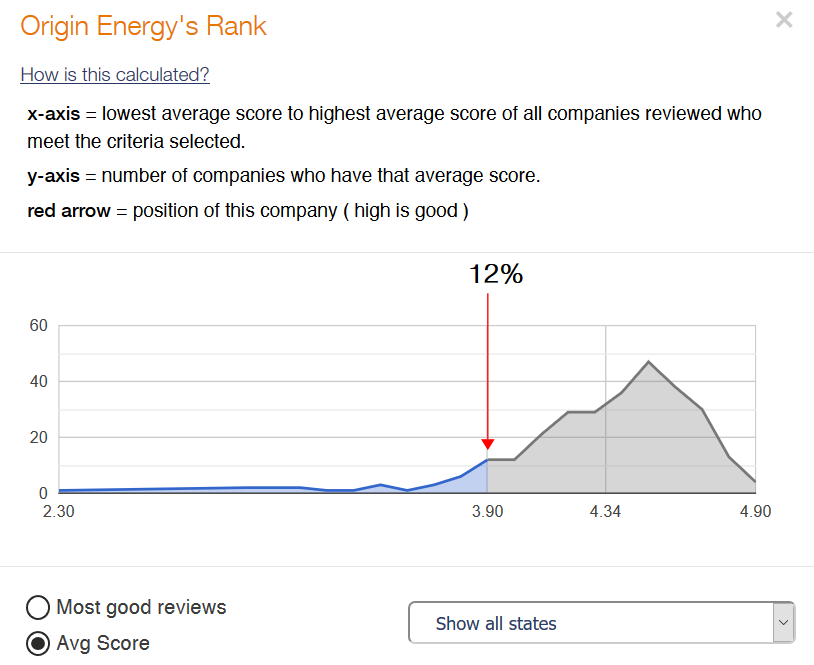
This AusRankings graph shows where Origin Energy’s solar installations reviews stand in comparison to other installers. Origin are in the bottom 12% of all solar installer reviews on SolarQuotes.
Varying Charges By Consumption May Not Be A Trick
Sometimes the amount charged varies according to how much electricity has been consumed. For example, in South Australia the first 11 kilowatt-hours of grid electricity used per day may cost a couple of cents less per kilowatt-hour than consumption over that amount. This encourages energy conservation and gives lower income houses, which generally use less electricity, a bit of a break. So it’s not actually evil in South Australia, even though it does make calculating the best electricity plan more difficult.
But plans sometimes available in other states that do the opposite and charge less the more you use — they are evil.
One thing to note is, if you don’t have a smart meter no one will know how much electricity you use each day. So if the first 11 kilowatt-hours receive a lower price you’ll only be charged the higher rate if your average consumption goes over this. (And they wonder why some people don’t like smart meters.)5
You Can Deal With The Devil
You can bargain with electricity retailers and attempt to get a better deal. For example, just the other day, a commenter told me they were able to receive Origin’s highest solar feed-in tariff despite not buying a solar power system from them. People have gotten around limitations on solar system size. Also, you can ask for lower prices, or higher discounts. But note the better a deal is, the less likely a retailer is to budge and improve it further. It’s easy to get a $100 discount when you are paying $500 more a year than you have to. It may be impossible to get them to budge if it’s already the best offer available.
The scope for bargaining is being reduced by the introduction of electricity plans that require you to sign up over the internet. On the bright side, the rates for these are generally low.
We Are All Individuals!
I’ll use the Comparison Tool to find the best deal in the capitals with electricity retailer choice, but first I’ll need to decide what kind of households I’ll find them for. According to the Australian Energy Market Commission there is a lot of variation between the states in average annual electricity consumption for a two person household:
But our Comparison Tool doesn’t use those figures. Instead, it uses the total annual consumption for the average home with solar in the state or territory. For the five capitals these amounts come to:
- Adelaide: 7,665 kilowatt-hours
- Brisbane: 4,380 kilowatt-hours
- Canberra: 4,380 kilowatt-hours
- Melbourne: 5,475 kilowatt-hours
- Sydney: 4,015 kilowatt-hours
If you suspect your annual electricity consumption is significantly different you can use the “Advanced” option to enter an estimate.
4 Scenarios For Households
To keep things simple, and so electricity costs between states can be easily compared, I will just look at homes with total electricity use of 5,000 and 10,000 kilowatt-hours per year. I can easily do this by using the default simple option for Accuracy and adjusting the “Total Energy Usage Per Day (solar + grid)” slider and setting it to 14 or 27. Because the bar only moves in 1 kilowatt-hour increments, I will actually be looking at homes with 5,110 and 9,855 kilowatt-hours total annual consumption.
I will find the best electricity plan in every capital with retailer choice for 4 types of household:
- 5,110 kilowatt-hours total annual consumption and no solar panels. (Just so we can feel sorry for them.)
- 5,110 kilowatt-hours total annual consumption and a 6.6 kilowatt solar system.
- A large and/or profligate6 home with 9,855 kilowatt-hours total annual consumption and a 6.6 kilowatt PV system.
- A large home with 9,855 kilowatt-hours total annual consumption and a 10 kilowatt solar system.
Apart from changing the “”Total Energy Usage Per Day” to 14 or 27 kilowatt-hours as appropriate, I will make no other changes and leave the “Self Consumption Ratio” slider at its default. This is reasonable as it will automatically go to the expected value for the location and electricity consumption.
Manually Checking Plans For Electricity Retailer Rip-Offs
Starting with a home without solar panels, and looking at the results for Adelaide, or Radelaide as it’s called when I’m in town, I see Powerclub comes out at the top of the list:
But since it’s still the beta version of the comparison tool, I’ll have to manually check to see if it’s using any tricks to fool us into thinking this electricity plan is better than it is. I do this by clicking on the “Link” symbol under “Plan Details”:
This will cause the electricity plan details come up and, provided there is a blue link, you can click on that to get more information:
Following the link lets me see this electricity plan is only for a home with a battery, which is extremely unlikely for a residence without solar. Powerclub also has an annual membership fee that effectively makes the daily supply charge considerably higher than the figure given.
Doing the same for the next plan from Origin that’s next on the list, I see it is only for people who have SA concession cards, which rules out the majority of homes in the state. On the other hand, it does gives you an incentive to get granny to move in with you and put the electricity bill in her name. (If you give me your address I’ll send granny to you, but you have to promise to take good care of her. Just give her some Dutch gin and cigars and she’ll be happy.)

Granny snacks (Image: Packaging of the World)
The next retail electricity plan is for Powerclub again. Their annual “club fee” bumps up what you really pay by $39 a year, but it still ends up a few dollar less than the next plan, which is from Red Energy. If Powerclub’s sneaky fee makes you want to give them a miss, be warned that Red Energy has a once off $22 joining fee, so they like to sucker punch too. They just don’t hit quite as hard.
Adelaide — Amaysim & Energy Locals, and Origin Ahead For Solar Homes
The best electricity plans I could find for Adelaide, after checking for tricks and traps and any extra fees that might apply, are:
- 5,110 kilowatt-hours total consumption and no solar: Powerclub, Powerbank Home Flat + Solar FIT $1,956
- 5,110 kilowatt-hours and 6.6 kilowatts of solar: Amaysim, Solar As You Go -$646 credit
- 9,855 kilowatt-hours total consumption and 6.6 kilowatts of solar: Energy Locals, Local Saver $1,301
- 9,855 kilowatt-hours total consumption and 10 kilowatts of solar: Origin, Solar Boost $386
Update 13:12 27 Jan 2020: I originally had an Amaysim plan as the best with a 10 kilowatt system but, as Stephen kindly pointed out in the comments, they only allow a maximum solar inverter capacity of 5 kilowatts and therefore a maximum solar system size of 6.66 kilowatts.
Just out of curiosity I also looked up the best plan for a home without solar power that used 10,000 kilowatt-hours a year and it was Powerclub at $3,484. So, going by these figures, the annual savings from installing solar in Adelaide are:
- 5,110 kilowatt-hours total annual consumption and a 6.6 kilowatt solar system: $2,602
- 9,855 kilowatt-hours total annual consumption and a 10 kilowatt solar system: $3,098
Brisbane — Red Energy Winner For Solar Homes
In Brisbane the best retail electricity plans according to the Comparison Tool and my manual checking are:
- 5,110 kilowatt-hours total consumption and no solar: Reamped, Anytime $1,395
- 5,110 kilowatt-hours and 6.6 kilowatts of solar power: Red Energy, Living Energy Saver -$401 credit
- 9,855 kilowatt-hours total consumption and 6.6 kilowatts of solar: Red Energy, Living Energy Saver $663
- 9,855 kilowatt-hours total consumption and 10 kilowatts of solar: Red Energy, Living Energy Saver -$267 credit
Canberra — Energy Locals On Top
In Canberra the best electricity plans I found were:
- 5,110 kilowatt-hours total consumption and no solar: Origin, Max Saver Online Special $1,408
- 5,110 kilowatt-hours and 6.6 kilowatts of solar: Energy Locals, Anytime -$455 Credit
- 9,855 kilowatt-hours total consumption and 6.6 kilowatts of solar power: Energy Locals, Anytime $798
- 9,855 kilowatt-hours total consumption and 10 kilowatts of solar: Energy Locals, Anytime -$213 Credit
Melbourne — GlowBird And Energy Locals Victorious In Vic
For Melbourne these were the best electricity plans I could find:
- 5,110 kilowatt-hours total consumption and no solar: GloBird, EasySave $1,419
- 5,110 kilowatt-hours and 6.6 kilowatts of solar: Energy Locals, Local Saver -$61 credit
- 9,855 kilowatt-hours total consumption and 6.6 kilowatts of solar: GlowBird, EasySave $1,034
- 9,855 kilowatt-hours total consumption and 10 kilowatts of solar: GloBird, EasySave $447
If you have gas, the GloBird Combo plan may be a better deal, but not everyone wants their gas, so I left it out.
Sydney — Origin, Energy Locals, & AGL On Top
Here are the lowest cost electricity plans I could find for Sydney:
- 5,110 kilowatt-hours total consumption and no solar: ReAmped, Handshake $1,444
- 5,110 kilowatt-hours and 6.6 kilowatts of solar: Origin, Solar Optimiser -$159 credit
- 9,855 kilowatt-hours total consumption and 6.6 kilowatts of solar: Energy Locals, Local Saver $1,227
- 9,855 kilowatt-hours total consumption and 10 kilowatts of solar: AGL, Solar Savers $213
Energy Locals Does Well
For solar households, Energy Locals is the retailer that comes out on top the most, but the best retailer electricity plan will depend on location. Also, I don’t want to give them too much credit because they still make it just as difficult to determine what you’re actually paying as most electricity retailers and so I don’t trust this friendly, non-profit organization at all. Use them if they will give you a better deal than what you have, but don’t trust them. Of course, that’s my attitude towards pretty much every electricity retailer.
I Can’t Guarantee They Are The Lowest Cost Electricity Plans
We (as in people at SolarQuotes who aren’t me) have put a lot of effort into getting the Comparison Tool right. But it is reliant on information provided to the tool and everything is complicated by retailers deliberately making their plans confusing because they don’t want to give the clear information that’s required for competition to work. So I’ll state I can’t be absolutely certain these are the lowest cost electricity plans available, but I am willing to bet a large amount that they are at least very close. How much am I willing to bet? Ooh, say… $90 worth of pizza?
Big Savings From Getting Solar Panels
Just to rub it in for everyone without solar power, here’s a graph showing annual savings from installing a 6.6 kilowatt solar system in all the capitals with electricity retailer choice:
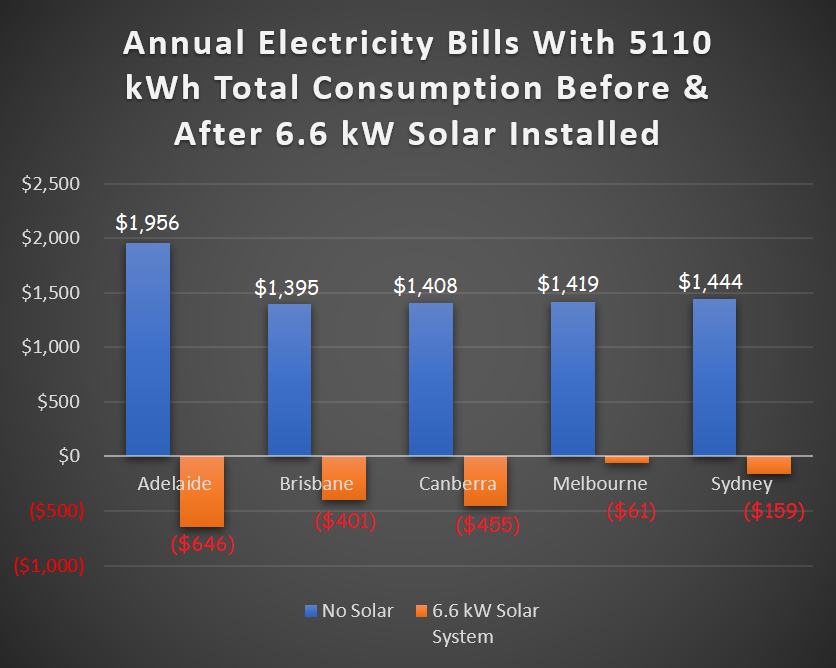
If you own an unshaded roof and don’t have solar, you are daft as a brush.
As you can see from the way the orange bars all dip below zero, the solar households in these capitals will pay less than nothing as their electricity bills will be in credit over a 12 month period. This is for 5,110 kilowatt-hours total consumption, which is more than what the AEMC says a typical two person household uses in all these capitals except Brisbane, but they will still pay less than nothing there because the AEMC amount is only 130 kilowatt-hours a year more.
If you prefer to look at actual figures rather than a graph, the annual savings from installing a 6.6 kilowatt solar power system for a home with 5,110 kilowatt-hours total consumption are:
- Adelaide: $2,602
- Brisbane: $1,796
- Canberra: $1,863
- Melbourne: $1,480
- Sydney: $1,603
With annual savings like this, provided you have a suitable roof, you’d have to be nuttier than a lumpy chocolate bar not to get solar panels.
I Come Out Ahead
By using the Comparison Tool for my own personal circumstances, I’ve discovered a retail electricity plan that should make me $84 a year better off. With the money I’ve saved from eating nothing but leftover pizza for the last three days, that’s enough to get me financially back on track. I’m so happy about this I’m going to celebrate by buying everyone sushi. Surely that can’t be expensive given they don’t even bother to cook the fish.
Footnotes
- Don’t ask me how idiosyncratic. I am not permitted to give any identifying information on my ex-wife, her house, or any people she may or may not have made in her belly. ↩
- But we still get to decide whose internet page we use and we’re sure to get a lot of enjoyment from that. ↩
- When I say we’re working, I mean we in general. I’m not actually doing anything other than crying over a box of $90 pizza crusts. ↩
- And I just want to say I appreciate how Emjay made me look like a Greek God. He has a very good eye. ↩
- But seriously, don’t refuse a smart meter if you’re required to upgrade. You will be charged a ridiculous and unfair amount if you refuse. ↩
- Profligate is Latin for, “I couldn’t be bothered to use a simpler word.” It also means, “wasteful”. ↩

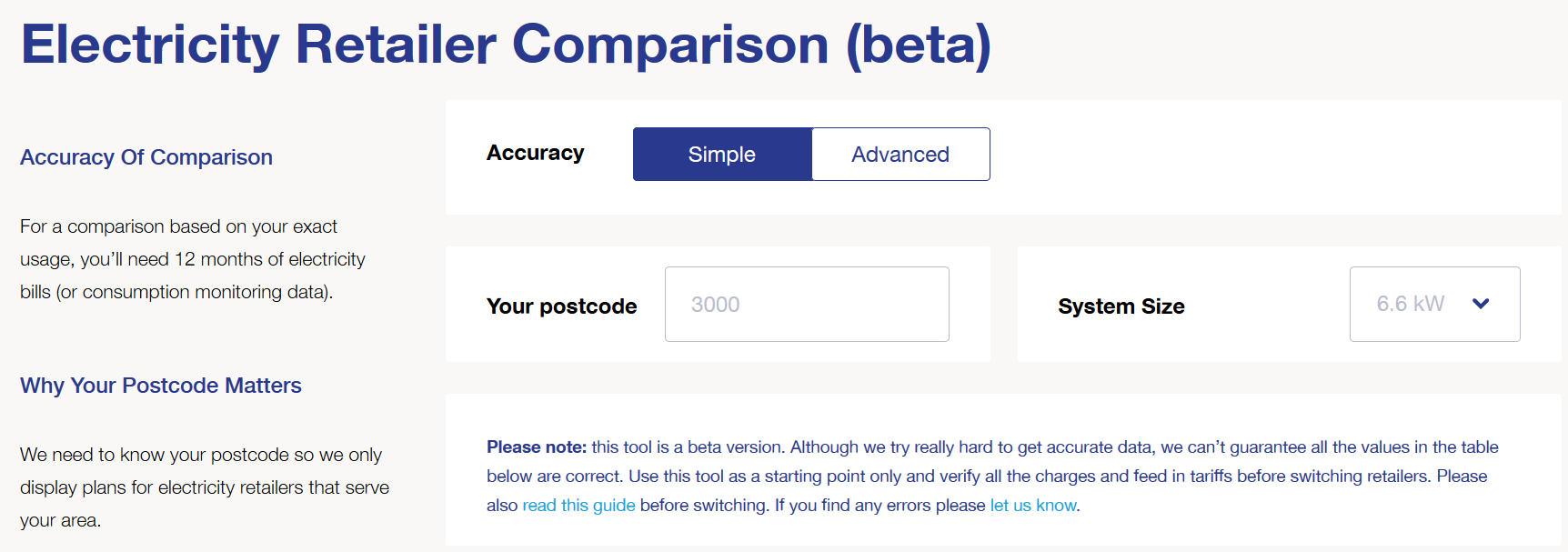


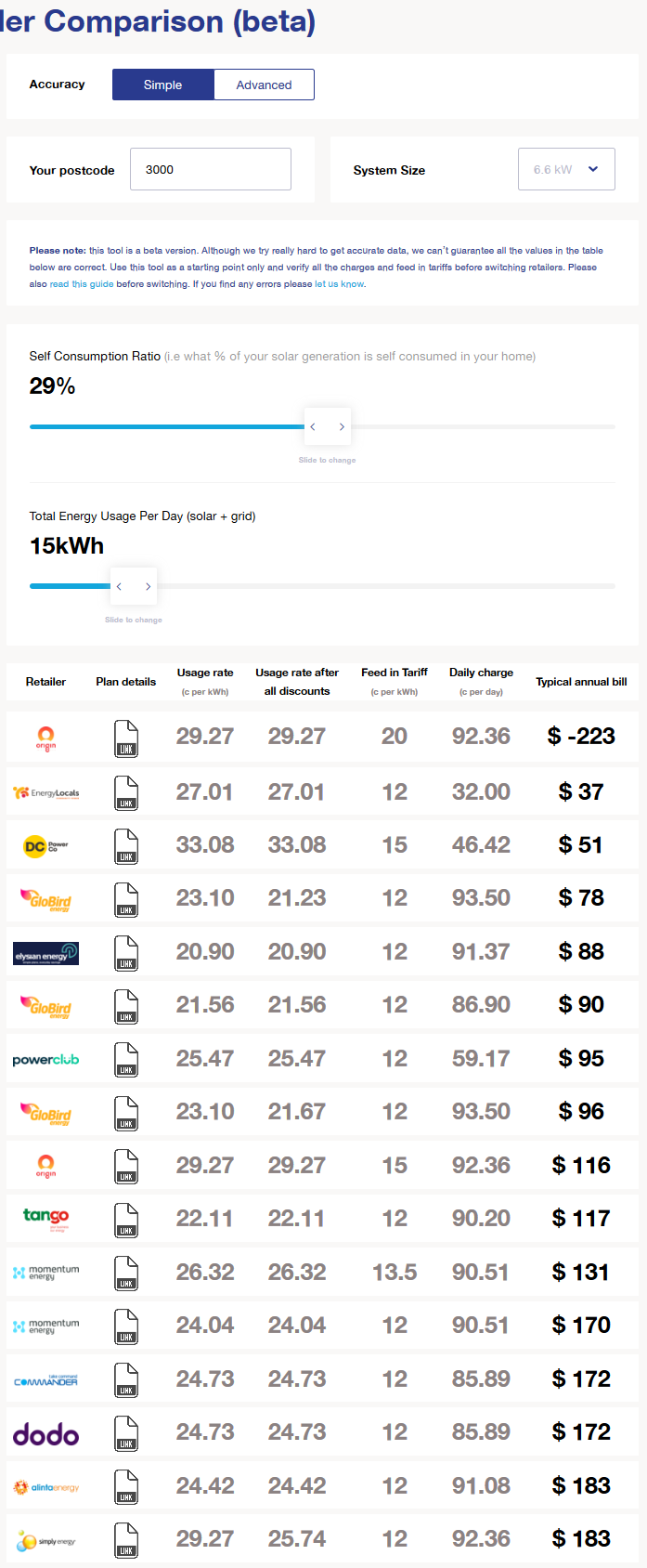
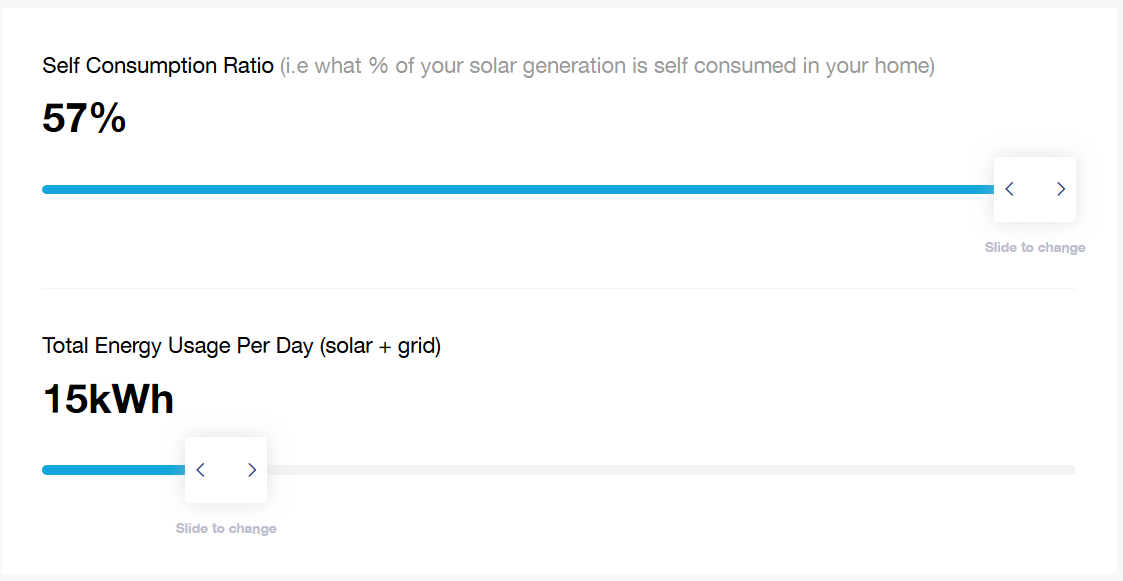
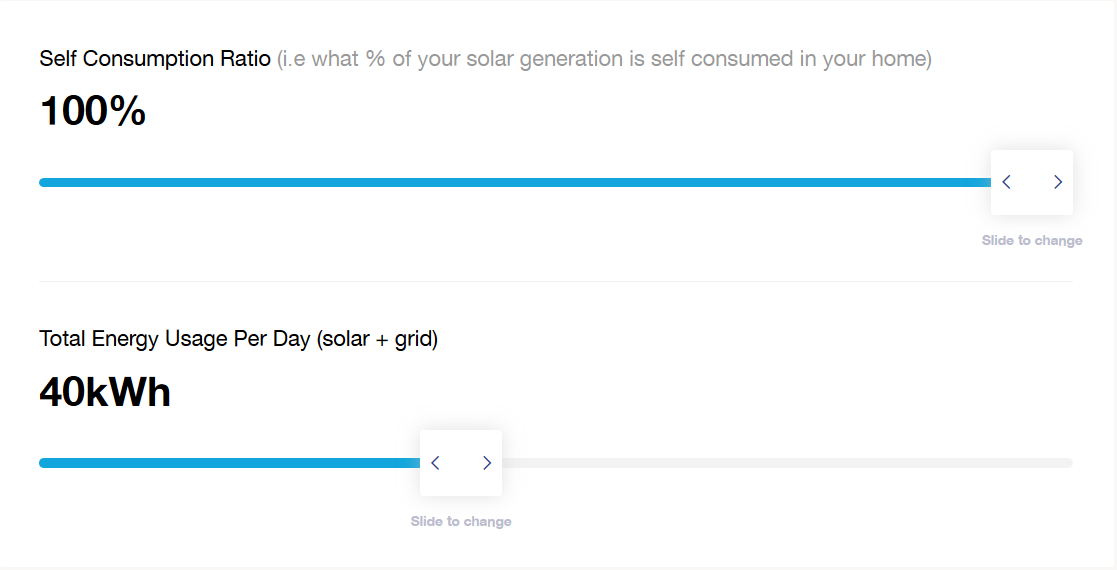

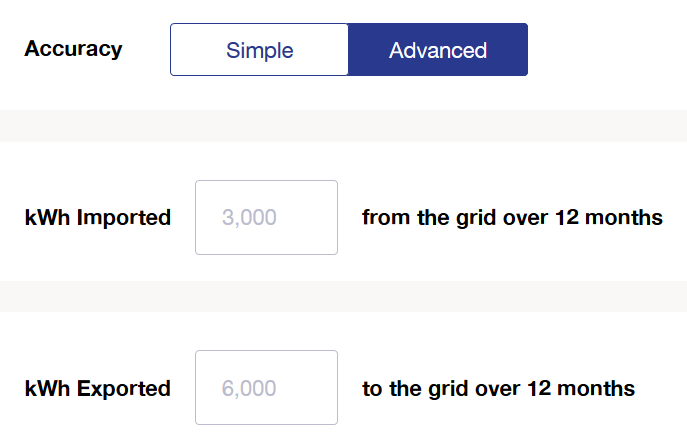

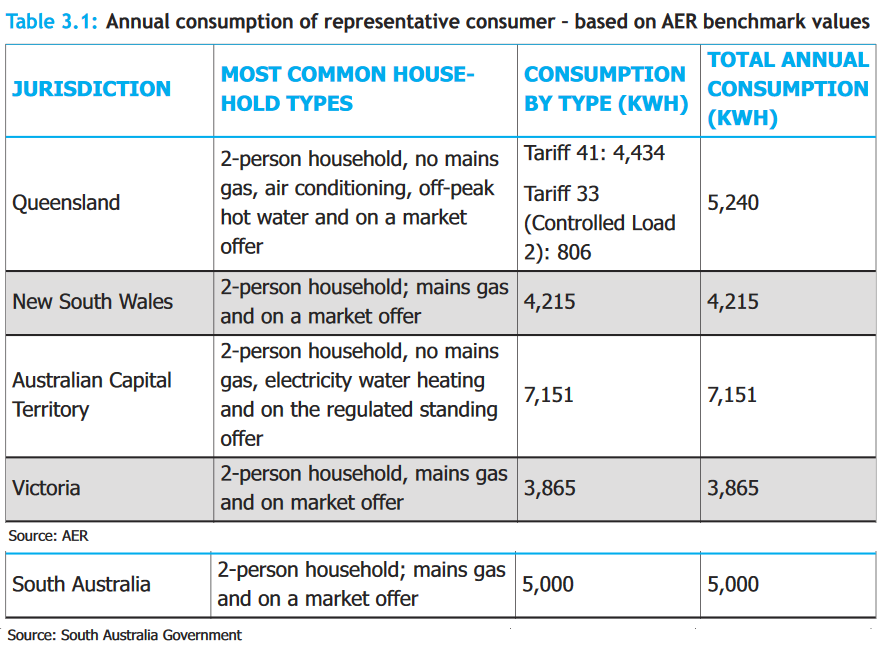
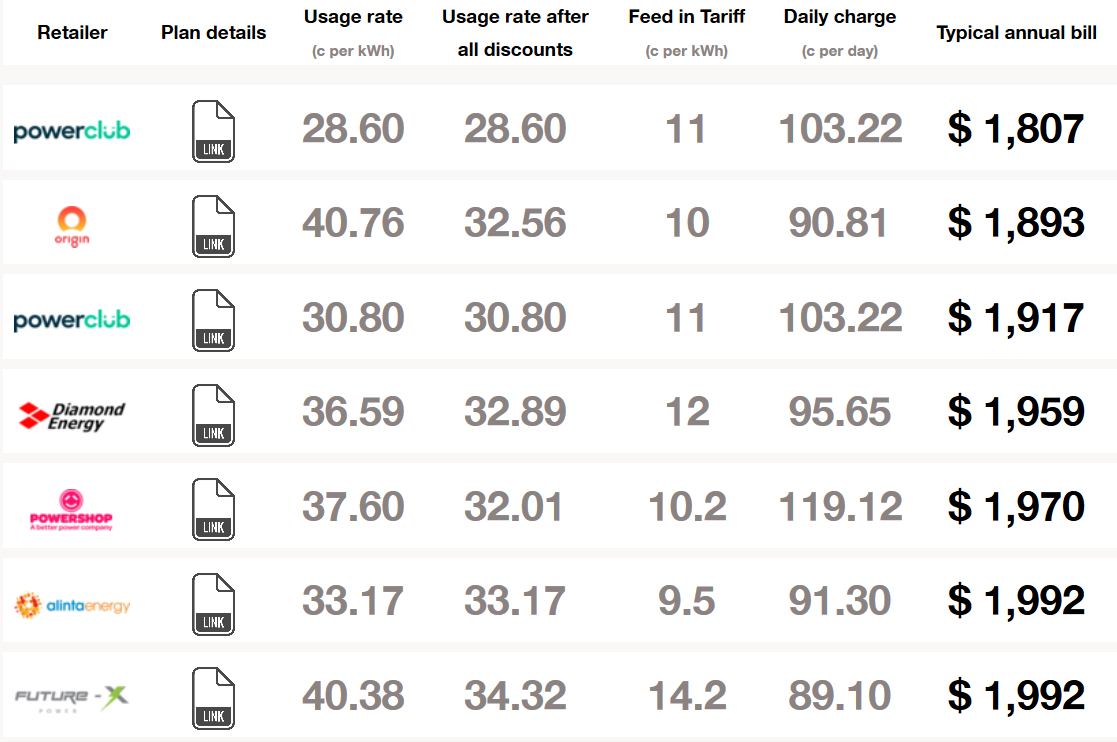

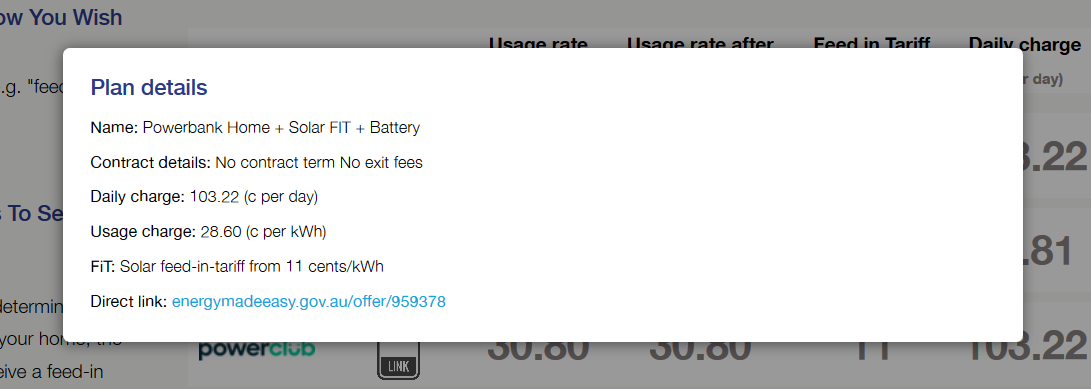
 RSS - Posts
RSS - Posts



Tried the tool for 3996,which showed Origin as the cheapest.Utter rubbish, when you go to their site and put in that postcode they are much more expensive than Tango my present supplier this month.
Hi Graeme
I did mention the Origin plan was not available to normal households. We are working on preventing electricity retailers from gaming the system like that. (Well, I’m not, but people who are better at that sort of thing than I am are.)
Your recommendation for Adelaide with 10kW of solar isn’t good – Amaysim are limited to 5kW of solar. Have been for a very long time! See page 10 of their Ts&Cs.
https://www.amaysim.com.au/dms/amaysim/documents/terms-conditions/amaysim-Energy-Solar-Terms-and-Conditions-SA.pdf
Thanks for that. I will update the article.
As you can see, it’s hard to keep on top of all these conditions.
Never mind “on top”.
Get out “from under”. Stand alone is the ONLY way to go, from any point of view. (Unless the reinstitute the 66-cent FiT, and (given all the t&c’s) it’s STILL borderline even then.
You can’t make money from stand alone. It costs money. If you are near enough to the grid to be on it spend the money you were going to spend on batteries on panels. There are social reasons for being on the grid too.
Since there’s no such thing as a free lunch, then of course you can’t MAKE money from a stand-alone system, but you can SAVE a shitload of money over what grid-connection costs (and that includes in terms of environmental damage and a conscientious frugality as re. usage, which is always good for the soul.) And perhaps you’d care to put a price on independence?
What you’re suggesting is that rather than installing a girlfriend of one’s own choosing one should sign a contract with the local brothel?…. sight unseen, on THEIR terms and conditions, which includes all sorts of options like hiking prices, regulation of product, keeping/adding-to/using any sort of private information about you (including via surreptitious surveillance), etc. etc. etc.
The REALITY is that ‘grid-providers’ are only in it for the money. YOUR money. ie you CANNOT be grid-connected without forking out cash forever at an ever-increasing rate….which includes paying for THEIR capital investment (as opposed to YOUR capital invest in CHEAP components and and DIY in stallation), interest at rates you can’t dispute, whatever running-costs THEY choose to impose (plus GST!) etc.etc.etc.
A quick look at google tells me the average Australian electricity bill is about $1600/$1800 pa, and rising. For that sort of money ~ and keeping in mind the fringe-benefits listed above ~ you can set up an adequate if modest stand-alone system. Add another the following year and you have ample electricity for FREE for the next few years ~until the batteries need replacing. (and keep in mind that suitable batteries which today cost between $1/$2 per AH are rapidly becoming cheaper and technologically better all the time.) If nothing else it’s a handy way of beating inflation!
In the same period, grid-connect electricity will have increased exponentially ~ and the assorted ‘hooks’/ surviellances/coercians will have likewise increased. If you’re taking bets (that just at the time your stand-alone system becomes ‘free’, the average grid-connected will be 100% higher than now? ….and that doesn’t include unpredictable-but probable contingencies?) Please contact me asap!
ps….. as someone who’s been involved with solar power since 1980, and who has a natural bent for getting value for money, I can say the ONLY time grid-connection was financially ‘worthwhile’ was when I was getting a 66-cent FiT ~ and electricity was 30% cheaper And even then, all things considered, only just.
hmmmm …..never realised you were a masochist! –> …”I’m paying way too much for electricity. It’s driving me broke! Financially I was doing okay until I told everyone I’d buy them pizza and it end up costing me $90. How can pizza cost $90?
…. I need to make some drastic cuts in my spending. It’s time to tighten the belt, cut the fat, pinch pennies until they squeal, and stop up the passage to remorse. A good place to start is my electricity bill.”.
I’m reluctant a make a suggestion, given your well-known vices (including the insistence that battery-banks aren’t financially viable ), but if you were able to swap your addiction to pizza to, say, potato salad/shepherd’s-pie/bangers and mash, etc., you could solve all the problems you list above…. keeping in mind that solar-power DOESN’T depend upon silicone.
Would you like to produce your own ( home-grown ~ ie stand-alone!) electricity and eat it too?
Really?
Check this out:- https://www.smithsonianmag.com/innovation/a-potato-battery-can-light-up-a-room-for-over-a-month-180948260/
They were selling solar powered fairy lights for 50 cents at the supermarket the other day. I can’t even get a kilo of potatoes for that much, so I’m pretty sure the PV + battery will be an easier way to light the home rather than using tubers.
As Ronald says in the article – the reason it is a Beta tool is that we are in the process of pulling all these conditions out of the retailers’ data feeds and into ours, then presenting the offers with all their caveats and restrictions. That is no mean feat, but is the only way to get a tool that is as up to date as possible.
I’m pretty sure no one else on the planet is doing this for a free tool. The government is literally spending millions of taxpayer money on EnergyMadeEasy – which is useless for solar owners. We are building this tool entirely with our own money, and are not monetising it. So feel free to cut us some slack!
I don’t envy your programming team Finn. I did essentially what your tool is doing in a spreadsheet. It seems our Electricity retailers go out of their way to be obtuse and misleading when it comes to discounts. terms and conditions etc. I wrote a blog piece if you’r interested, Just nowhere to publish it..
Aren’t you glad you didn’t outlay umpteen-thousand dollars for a grid-connect ‘power-wall’?….and by the way, I think you owe Kochie and apology!
Energy Australia FIT is now only 11c
in SA – sorry
This is the first comparison tool that gets close to reality for a system like mine on the plan that I am using. Origin with a 21c fit. I currently pocket about 1300 a year which lines up pretty closely with the 1300 (approx) calculated by the tool.
Would like to know what you have to do to qualify for 23c fit.
Almost makes me want to calculate whether the generous fit will go some way towards justifying the ridiculous claims made by people trying to sell panel cleaning to gullible consumers.
Try a high-pressure garden hose. Your $1300 might “go some way towards” reducing your ancillary costs like the ‘Service to Property Charge”, GST etc.
Can’t clean them at all at the moment in Sydney. Long, long drought.
Weird what considerations sneak in, isn’t it? Pour a couple of slabs down your mates and line them up on the ridge-line of the roof, flies undone!
….or you could move to Melbourne….. 🙂
The 1300 is net. Of All costs including service charge and gst. That’s why it’s “in my pocket”.
High pressure garden hose costs money and time. Rain does the same job and is free.
hmmmmm. So you’re suggesting your provider is supplying electricity at a loss?
No, not at a loss. I just buy much less of their electricity at 38c/kWh than i supply them at 21c/kWh.
My monthly ‘bill’ is well over $100 into my bank account.
December for example: Consumed 182 kWh, fed 1015.42 kWh into the grid which left me a credit of 833.42 kWh. You work it out at 21c fit.
I haven’t paid for electricity for about eight years except a few quarters when the 60c fit cut out and we were getting 6c/kWh.
I’m sure I’m not the only one doing this – how can you not have heard?
Good for you. I couldn’t approve more; and it’s what I was doing when the FiT was 66 cents. (Difference being I had a much smaller system because the costs (panels/etc/etc) were still exhorbitant.) You deserve credit, too for your conscientious frugality @ about 6kwh per day (182 pr month).
However (and I note you don’t include ‘service-charges’ etc. in your calculations) the numbers DO show that ~ in your case ~ they ARE operating at a loss, which, presumably, is acceptable because they more than make it up by selling your contribution on at a higher cost. They’re not going to go broke just to be nice to you!
Cheers
Again, how do you get 21 FiT from Origin? I want it too. Ipswich SE Qld.
Might be they do different tariffs in different parts of the country. Can’t hurt to ring and ask.
Great work SolarQuotes. Thank you.
I don’t envy you trying to create a tool to capture most of the variables in our crazy energy “market”
I gave up in disgust and plug my past data into a spreadsheet and compare SA offers. Luckily I locked in AGLs solar saver for 2 years with 20c FiT
Given our house runs on the smell of an oily rag I can’t wait to see how my free Emberpulse monitor will save me the claimed $500 per year
…. and don’t forget Murphy’s Law: Just about when said tool and/or whatever gets within cooee of being a goer someone will change the parameters! Murphy was an optimist!
How do I get FiT 20 with Origin. when I go to their website and compare plans it’s 15 but then you loose the discount. Which plan gives 20 FiT and discount?
Let me know what region you’re in and I’ll see what I can find for you.
Hi Ronald, I am in Ipswich (SE Qld)
Hello Grace
I’ve put the postcode for Ipswich into our comparison tool and told it you have a 6.6 kilowatt solar system. The Origin Solar Boost Plus plan comes out on top, but that is only available if you buy a solar system from Origin and then it’s only available for a limited time.
The next best plan it gives me is from Red Energy, Living Energy Saver: Daily supply charge 103.4 Per kilowatt-hour charge 22.44 Solar feed in tariff 16.1 cents
After that the next best is from AGL, Residential Solar Savers: Daily supply charge 106.7 Per kilowatt-hour charge 25.66 Solar feed in tariff 17 cents
If you use the advanced option and enter the figures from your electricity bills the plan it says is best for you may change.
Thanks Ronald, I spoke with Origin yesterday. My current bill Saver Plus plan gives me 11c FiT and 21% discount on usage and supply (until July 2020). The CS lady then offered me 15 cFiT but… did not inform me I would lose my discount. I had to ask to find that out. I have looked and called around a bit but have not found anything better yet. Am open to suggestions.
Charges are:
Peak Usage 1075 26.62 c/kWh
T33-Controlled Supply(Economy) 252 22.242 c/kWh
Solar Meter Charge 6.974 c/Day
Supply Charge 124.003 c/Day
Supply Charge – T33 2.992 c/Day
Btw, we have only a 3KW Solar system.
Grace, with a 3 kilowatt solar system, our comparison tool still says the Red Energy plan will be the best.
Thank you! I will look them up.
I followed up but found that, thanks to the 21% discount that I still get from Origen, the savings were only a few dollars and not worth the change-over. However, come July I will certainly look around again. Thanks for your help Ronald.
Hmmm….Mr Brakels clearly failed geography at school. Yet again he has forgotten that little Island south of the Australian Mainland. You know, the one that begins with “T” ? And yes it does now have retailer choice…..
A direct quote from the article:
“Technically there is retailer choice in Tasmania, but it’s not much of a choice. If you have solar power, go with First Energy as they have a higher solar feed-in tariff but are otherwise exactly the same as Aurora which, confusingly, was the state’s first energy retailer.”
My apologies. I clearly failed written comprehension at school !
Nice start, however:
– where do I enter in my controlled load usage?
– how do I compare with time of use tariff plans?
A lot of households have controlled load and it’s a big chunk of energy import.
In my case the best TOU plans are much better than general tariff plans by a couple of hundred bucks a year.
And yes, the Origin plan coming out on top is a nonsense.
Needs direct links to plan details for all plans. It only shows up for the occasional plan in the list, which kind of makes it hard to head to the plan detail.
We are working on all those things. Watch this space.
Cool, best of luck with it!
There’s one other thing I guess would be pretty tricky to deal with when it comes to TOU – in my area the TOU periods differ between retailers. Which means the balance of energy imported for each TOU tariff period will vary, even though the total is the same.
IOW I can’t simply use my current retailer’s bill to get the energy totals by TOU period and plug those in to a comparison tool. It would require the actual hourly energy import data to be able to apply the relevant TOU periods.
Classic case here is Origin, which on face of it has a very competitive tariff offer with AGL, such that the annual bill calc based on my current TOU imports are very close. But they each apply different TOU periods, and when you adjust the TOU usage accordingly, Origin ends up a couple of hundred bucks more and way down the list.
I guess there’s a limit to what can reasonably be taken into account with comparison tools.
Can hourly usage data can be pulled from the market operator by NMI (with permission) and plan optimisation done that way?
I used an article you did on this a bit more than year ago
A big thing I noticed was that unlike here all the comparison sites I loooked at left out the retailers who were cheaper than than what I suspect is the plans they received commision on
I also rejected plans that had discount rates but do not clearly state the discount rate or othen exactly what it applys to
or other tricks that are designed draw you in (sites like origin that you have to click through multiple pages to find rates and then discover they do not apply to you. since when does Plus mean provider installed except in the fine print on a page that you have to find)
This tool worked pretty well for me, giving me numbers that were very much in line with my own calculations. Wasn’t ‘exact’ but close enough to give an initial indicator of which few retailers to look at in more detail.
Saves heaps of time.
I wonder though if you are attempting the ‘impossible’ by overly refining the tool. You may well find that you have to delve into the mathematics of chaos theory to do so.
If you succeed please send me a copy of the model so I can apply it to evaluate and compare just about everything.
I’m in Western Victoria a PowerCor Distribution area. I am currently on a T.O.U. electricity plan as I have a solar system. I am told by my retailer that I have to be on this TOU plan due to PowerCor requirements.
So why when I put my data into the retailer comparison tool do I get a list of flat rate plans (not available to me) that also show a FIT amount?
Can they legally for us onto more expensive plans? Is there anything we can do about this.
I would like to hear from others in this position.
Probably a unique case here at 2620 where both ACT and NSW uses the same post code but depending on the grid network (evoenergy or essential) and whether it is in ACT or not the supply charge rate is significantly different. Mixed both distributors plan and the comparison tool becomes frustrating to use.
Energy Made Easy website is due for an update in June which takes in solar feedin benefits
Btw, I spoke with Origin yesterday. My current bill Saver Plus plan gives me 11c FiT and 21% discount on usage and supply (until July 2020). The CS lady then offered me 15 cFiT but… did not inform me I would lose my discount. I had to ask to find that out. I have looked and called around a bit but have not found anything better yet. Am open to suggestions.
Charges are:
Peak Usage 1075 26.62 c/kWh
T33-Controlled Supply(Economy) 252 22.242 c/kWh
Solar Meter Charge 6.974 c/Day
Supply Charge 124.003 c/Day
Supply Charge – T33 2.992 c/Day
Hi guys, I live in SA, and have a 6kw set of solar panels and 10kwhr inverters. All approved thru SA Power networks. I’m not sure if discussed elsewhere, I’m NOT eligible to join Amaysim plan AMA32341MRE1. They have a limit of 8kwhr of inverter sizes. Gasp. I told them they should change. I could no see that written anywhere on their website. I suggest they go back to selling phone plans! Not happy, JAN!